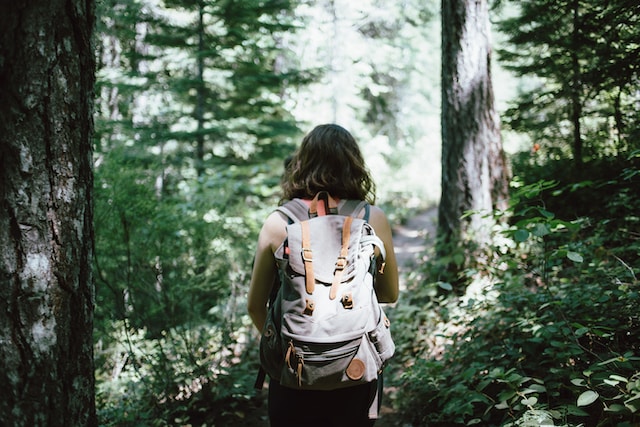If you’re considering going on a hiking adventure, you need to go prepared. While city life coddles us, nature is considerably more dangerous.

But what exactly do you need to take with you? That’s what we’re about to find out. This post covers all the essentials you need to avoid getting stuck up the creek without a paddle, both figuratively and literally.
Clothing And Footwear
When it comes to hiking, wearing the proper clothing and footwear is essential. You need multiple items to keep you warm, protect you from the run, and keep the rain off your back.
Start with moisture-wicking base layers to keep you warm and dry. These are like a form of insurance, helping to retain heat, even if conditions turn for the worse.
You’ll also need lightweight and breathable pants. Don’t try to go hiking wearing jeans. These garments can cause chafing if you wear them for a long time, and if it’s a hot day, you’ll feel sweaty and uncomfortable in them.
You also want a moisture-wicking shirt. Again, these garments help to take sweat away from your body and encourage it to evaporate.
Another essential is warm socks. You’ll want these when trekking through snow or hiking in cold weather. They keep your feet insulated and prevent blisters by providing a thick layer of protection between the skin of your feet and the inside of your hiking boots.
Speaking of which, you’ll want some sturdy, waterproof boots for your hiking expedition with ankle support. Proper boots let you plow through challenging terrain and avoid twisting your ankle.
Gear And Equipment
Once you have your clothes sorted out, you’ll want to consider your gear and equipment. What you need depends heavily on where you’re going, though there are some generic items everyone should take with them.
For instance, you’ll want a fully-charged cell or satellite phone in case of an emergency. If you fall, you may need to contact other people for help.
You should also take backup navigation equipment with you, such as a map and compass. Being able to tell where you are and your direction of travel makes it less risky if your GPS stops working or you find yourself in an unfamiliar area.
Another great piece of equipment to take with you is a multi-tool. Having various saws and scissors helps you on the trail if you need to come up with makeshift solutions.
A headlamp or flashlight is also helpful for hiking at night and seeing what’s in your tent. And you might want sunglasses or a wide-brimmed hat for sun protection.
Proper Hydration And Nutrition
Finally, you’ll want to take proper hydration and nutrition with you. Remember, the number of calories you can consume while hiking is often tremendous compared to what you’ll get through on an average day.
Trail mix exists for a reason: it’s healthy and energy-dense to keep you going all day. You’ll also want some energy bars and dried fruits to support you during your travels.